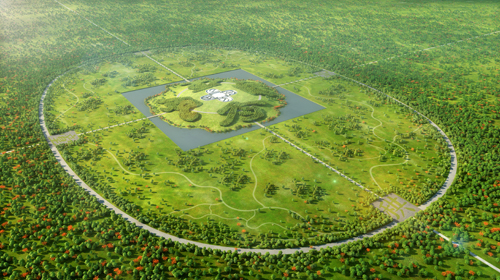|
 |
|
Bird's eye view of Central Park (FILE) |
A collection of artworks by Gu Wenda, one of China's pioneering contemporary artists, was presented at downtown Manhattan's Chambers Fine Art gallery on November 15.
As his first solo show at the gallery, the exhibition, Gu Wenda: Central Park, offers material revolving around garden design and urban planning with preliminary studies, paintings and documentary material included in a video installation.
Gu debuted the exhibition in Shanghai in 2010 under the title China Park, as part of the Shanghai Pujiang OCT 10-year Public Art Project. The name change to Central Park symbolizes its relocation to Manhattan, according to some New York art critics.
Central Park is an ideal scheme in which every element has been carefully considered and is resonant with meaning. "Unifying the landscape and architectural features are the Chinese concept of yin and yang and the five elements in Chinese traditional philosophy: metal, water, wood, fire and earth," Gu said.
In the center of the exhibition sits the River Calligraphy Garden, which is surrounded by a river and is interlaced with a complex network of narrow canals. Representing yin, the feminine qualities of the river separate the core complex from the lushly planted green expanse of the Green Forest Calligraphy Garden. There, the masculine character of the trees represents the complementary and opposite yang. On the perimeter of the gardens the four Merit Monument Squares and Gates situate the gardens within a cultural and historical matrix of references.
As one of China's most popular contemporary artists since the early 1980s, when he first came to prominence with his pseudo-calligraphy and mixed-media installations, Gu has participated in numerous international solo and group exhibitions as well as biennales. He moved to the U.S. in 1987 and started his life as an independent artist, focusing on traditional and modern concepts and eastern and western themes.
(Reporting from New York City) | 